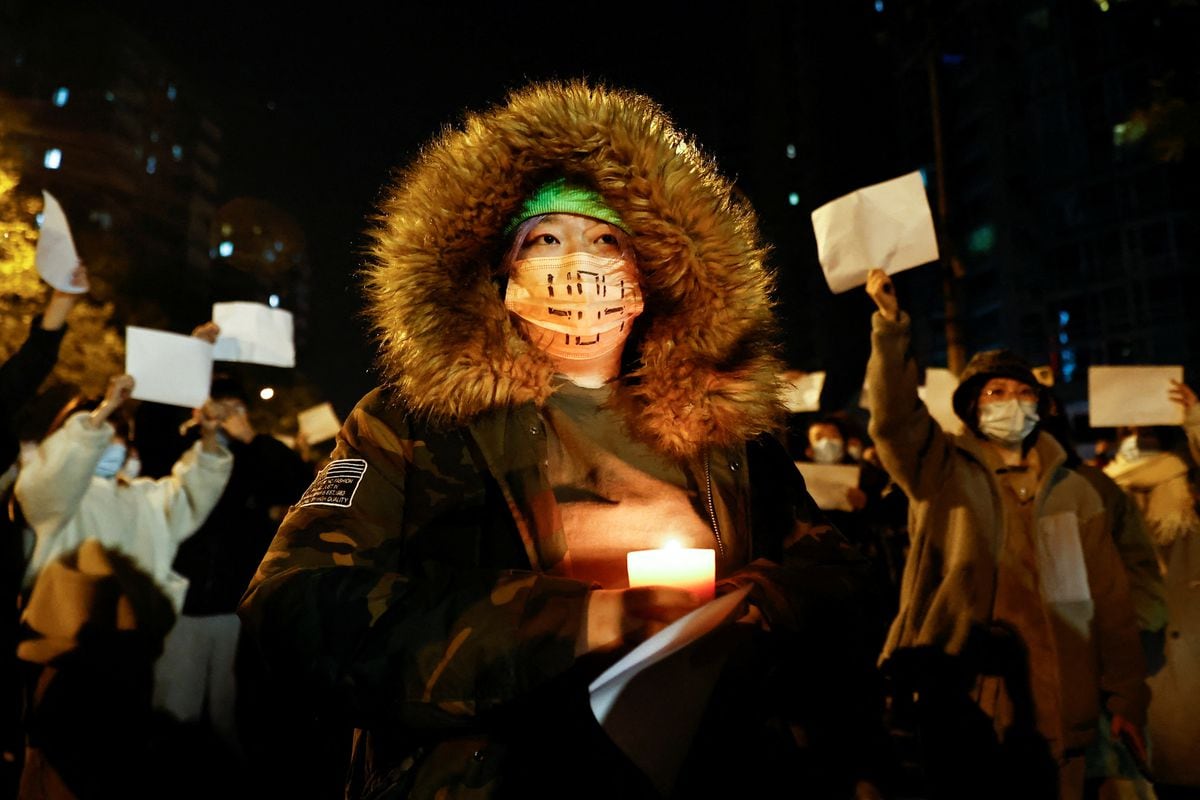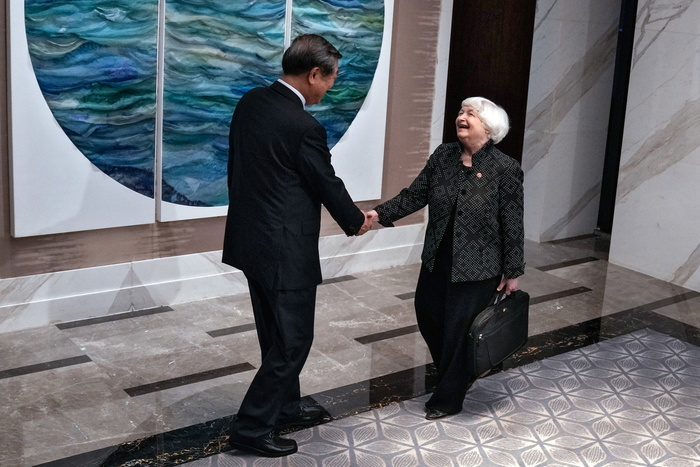The battle against the coronavirus has been Chinese President Xi Jinping's top priority since early 2020.
The Asian giant is the only one of the large economies on the planet that continues to cling to the zero covid policy, a strategy that has saved millions of lives and has allowed the most populous nation in the world to register a tiny number of infections compared to other countries.
However, the economic ravages are weighing more and more among ordinary people, and patience after two and a half years of restrictions has run out among large sectors of the population, who have come out this weekend to demand political changes in the main cities.
So many sources of demonstrations in different corners of Chinese territory is something extremely unusual,
Many hoped that after the 20th Chinese Communist Party Congress was held in October, the authorities would relax strict sanitary measures.
However, in his opening speech at that great five-year political event, Xi emphasized the need to continue the fight against covid-19 as before: “We have adhered to the supremacy of the people and of life.
We have adhered to the zero covid strategy and have achieved significant positive results in overall epidemic prevention and control, as well as economic and social development."
To make matters worse, the appointment of Li Qiang as
number two
in the party, and probably the next prime minister, increased doubts about the opening.
Li was the architect of the draconian lockdown of Shanghai, which for more than two months locked up 25 million people in the financial heart of the country, causing enormous discontent.
In addition to the general weariness, a chain of events that occurred in the last 70 days —and with great repercussions on networks— are key to understanding the outbreak of the protests this weekend.
On September 18, 27 people died when a bus that was taking them to a quarantine center in Guizhou overturned.
Celvin Wong (not his real name), a thirty-something publicist from Shanghai, established a parallel between the wrecked vehicle and his country shortly after for this newspaper: “We all traveled on that bus.
We all know that the driver is going to the wrong place, but we can't control the steering wheel.
You can't go down.
We all travel on a bus called China.”
Hundreds of people gather this Sunday on the banks of the Liangma River, in the populated district of Chaoyang, in Beijing, joining protests in various cities in China against the zero covid policy after the death of 10 people in a fire. confined building in the city of Urumqi.
The demonstrators chanted slogans such as "no more confinements" and held up blank pages, which have become the symbol of these protests.MARK R. CRISTINO (EFE)
A group of people protest in Shanghai.
Young people and students led several outbreaks of demonstrations in different parts of the country on Saturday night. HECTOR RETAMAL (AFP)
Agents monitor the march in Beijing.
Dozens of police have led the protesters in the direction of the Yongding River, where the protests have continued.THOMAS PETER (REUTERS)
Holding blank sheets of paper, which have become the symbol of these protests, and shouting "We want freedom!", "Open China!", hundreds of people gather in Beijing this Sunday.
THOMAS PETER (REUTERS)
A person holds a candle during the protest in Beijing.
A part of the population has interpreted that the 10 victims of the fire in Urumqi, in the Xinjiang region, on Thursday, could have been saved if the sanitary measures that kept the area semi-confined and protected with barriers that prevented firefighters had not been applied. arrive on time.
THOMAS PETER (REUTERS)
A man is arrested during protests in Shanghai this Sunday.
Several people have come to the place with flowers, which the agents have not allowed them to deposit on the ground. HECTOR RETAMAL (AFP)
Protesters in downtown Beijing.
The protests that began on Friday night in the streets of Urumqi, in the Xinjiang region, have spread especially through the Faculties of Image and Communication in large cities such as Nanjing, Xi'an, Chengdu or Guangzhou, where they have gathered Students at vigils for those killed in the fire.
MARK R. CRISTINO (EFE)
Police arrest several people in Shanghai.
In addition to the blank page, the use of masks with the inscription "404" has also spread among the protesters, in reference to the recurring censorship in networks of all kinds of messages related to incidents related to the pandemic.
404 is the most frequent error code these days when trying to open a page or file in WeChat or Weibo posts.
HECTOR RETAMAL (AFP)
The rallies have left emotional images in which dozens of young people chanted in unison "long live the people" and sang "La Internacional" while turning on the lights on their mobile phones.
In the image, protesters in Beijing, this Sunday.
THOMAS PETER (REUTERS)
On October 13, two days before the start of the Party Congress, the police arrested a man in Beijing who had placed two banners on a bridge, in whose messages he charged against Xi and claimed: “We do not want PCR tests, we want to eat;
We don't want confinement, we want to be free”.
This phrase is precisely one of the most repeated in the congregation that took place on Sunday on the Liangma River, in the capital.
The protester's whereabouts have been unknown ever since.
In late October, hundreds of workers fled en masse from Foxconn's Zhengzhou factory over their discontent with the strict quarantine and living conditions during an outbreak that was detected inside the facility.
In the worst onslaughts of the coronavirus, Chinese factories establish a "closed loop" system, under which employees cannot leave the plant to avoid contagion.
This week, wage protests broke out in that same factory, which merged with those who criticized that the new workers hired were being mixed with some infected with covid.
Days before, migrant employees from Guangzhou tore down the fences that kept them confined to their blocks and tore down PCR stalls, in a riot that lasted just 20 minutes.
Added to this heated environment was the death of 10 people on the 24th in a fire in Urumqi, the capital of Xinjiang, a tragedy that, according to a part of the population, could have been avoided if sanitary measures that kept the building semi-confined were not applied.
A day later, a public official from the region questioned the "lack of knowledge or skills of residents to protect themselves", comments that blew up the networks.
The images of the demonstrations on the 25th at night in Urumqi seem to have been the spark that many needed to decide to take to the streets.
The population is also aware that in other countries they have chosen to live with the virus, despite the fact that infections continue.
That in November President Xi met with other leaders abroad (and without a mask) at the G-20 summits and the Asia-Pacific Economic Cooperation Forum has generated debate, as is the World Cup in Qatar, where it has been shown that the rest of the world has practically returned to pre-pandemic normality.
Follow all the international information on
and
, or in
our weekly newsletter
.
Subscribe to continue reading
Read without limits
Keep reading
I'm already a subscriber









/cloudfront-eu-central-1.images.arcpublishing.com/prisa/KMEYMJKESBAZBE4MRBAM4TGHIQ.jpg)



